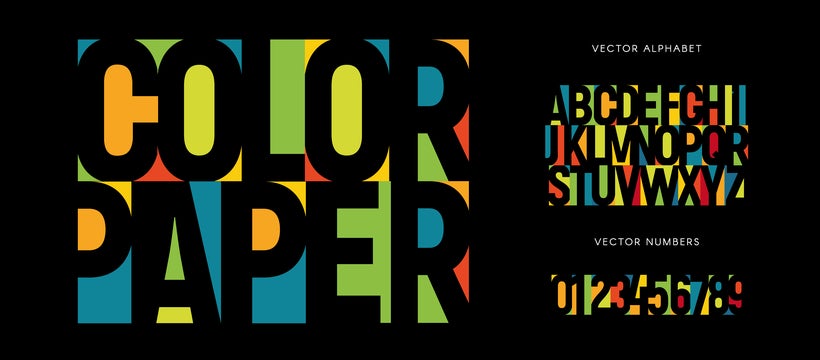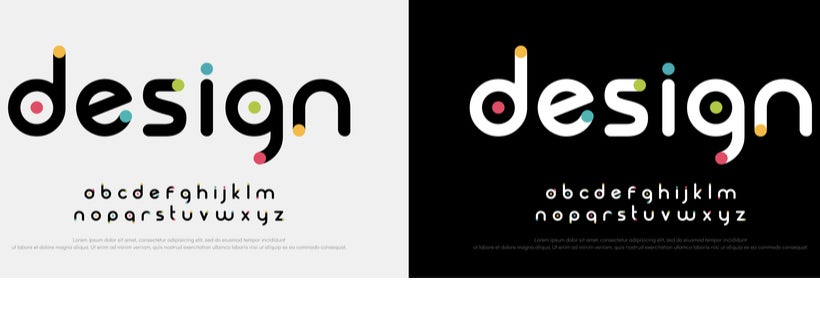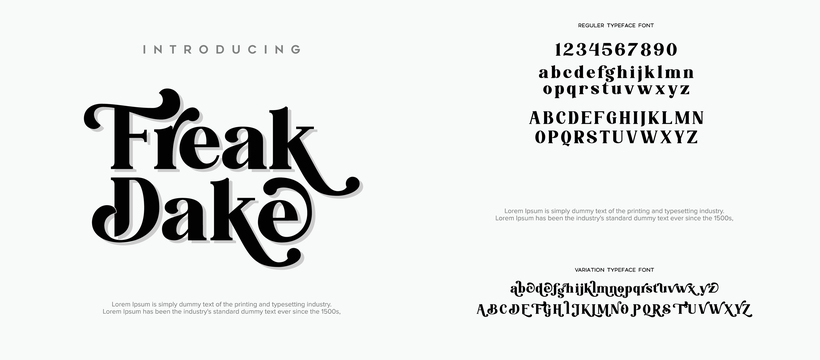Fonts help to tell the story of your brand by bringing a voice and personality to your business. Font choice is typically more subtle than brand logos, color choice and imagery, but great font choice is vital for branding and effective communication. Whether it’s print or online, a good typeface can engage your audience—while a bad one can drive them away. There are some key things to consider when choosing or designing a font for your business.
Typography

One study revealed that companies who use fonts that are considered appropriate are able to gain the trust of their customers and establish authenticity with their audience. So, if you’ve already settled on a logo, you may have a primary font that matches your brand’s aesthetic. However, the work doesn’t stop there—you’ll also need a strong secondary font and clear body copy font. These tips will help you through the process.
Typography refers to the overall design and display of letters and text for both print and digital mediums. Typography is used to format text for business cards, letterhead, custom banners, and flyers as well as digital media like websites, social media platforms and webinars. It goes without saying that great typography is essential for all brand communications.
There are three essential elements of typography. First, line length refers to the number of characters between the left and right margins. Next, kerning tells you the space between characters, letters, or numbers. Lastly, tracking refers to the horizontal spacing of letters, numbers or characters.
Choosing which fonts to use is part of the brand design process. Typography plays a significant role in distinguishing amateur aesthetics from professional and polished brand presentation. The reason for this is quite simple: If your font choices look messy, are hard to read or look off-brand, customers will have a hard time reading your marketing messages and connecting with your company.
Typeface vs. Font

A typeface is a specific group or family of letters and characters that share the same design, often identified by name. For example, Georgia is a typeface, as are Times New Roman and Arial. There are thousands of typeface families to explore.
Font refers to typeface style, specifically its size, weight, and height. For example, a typeface can be styled in italics or bold font. However, these terms are often used interchangeably today, with the font being the most popular of the two.
How to Choose the Best Fonts for Your Business
Simplicity is Key: Don’t select more than two fonts for a specific place or for your company. Having more than two fonts can complicate the design process and make the content too distracting to read.
Brand-Appropriate Fonts: Are you going for a sophisticated look to attract upscale clientele? A serif font may work best. If you want your brand to look friendly and casual, opt for a sans-serif font. Your font choices need to reflect the emotions your company wishes to evoke. Do you want to present your brand as artistic, innovative, or traditional? Each of these words correlates to different font families. Use fonts that align with how you want people to perceive your business. For instance, a comic-style font may be a bad idea for an accounting firm. Hiring a designer can help you make the best font choices to appeal to your target market.
Easy on the Eyes: The fonts you choose should be easy to read. If people can’t read your message, your marketing efforts will fall flat. Consider choosing a font that is easy to read on small screens such as mobile phones and iPads. Some fonts are legible on larger screens, but less so on small ones. Your font choices need to strike a balance between promoting your brand identity and being responsive across platforms. You may take more liberties with fonts for your company logo, but font choices for longer copy need to be straightforward and scannable.
Pick Contrasting Fonts: If you choose two fonts, you can choose the first one as serif and the second one as sans-serif for contrast. Don’t pick fonts that are too similar to each other. If there is nothing to distinguish one font from the other, your message will run together and it becomes harder to highlight key information.
Fonts for Logos

When it comes to logos, the font you choose doesn’t have to be the same as those you have selected for your brand communications. However, Serif and Sans-serif fonts are great choices for logos as well.
To get a better idea of how serif and sans-serif fonts are used in logos, here’s a list of a few companies that use these fonts:
Companies like Vogue, University of Virginia, Christian Dior, Robert Mondavi Wines, and JP Morgan use serif fonts for sophisticated branding. While Toms, Gucci, Google, Walmart, and BMW use sans-serif fonts for a sleek, modern look.
Serif or Sans-Serif?

Each font has its own personality and unique appearance. The fonts you choose set the tone and feeling you want to communicate to your audience. Serif and Sans Serif are two of the most popular fonts.
Serif fonts have a decorative look that the sans-serifs do not have. On the other hand, sans-serif fonts are simpler, cleaner, and sometimes easier to read, especially in digital form. These two font styles are best suited for branding purposes. A sans-serif font is used for headlines and sub-headings and a serif font works well for body text.
Serif fonts are used almost exclusively in literature. They are often associated with traditional businesses and convey a serious tone. Studies on fonts have shown that serif fonts are typically associated with words like reliable, traditional and elegant.
Sans-serif fonts are more commonly associated with modern, less formal designs. Clean and modern are words often associated with this type of font.
Final Thoughts
While you will have the opportunity to use other fonts in design assets like websites, brochures, and packaging, your logo font is the one your audience will closely associate with your brand. Therefore, it’s important to consider how a font will perform when customers see it not only for the first time but on repeated viewings.
When you start the process of selecting the right fonts for your business, it can get overwhelming simply because of the sheer number of readily available. Follow the tips above to find the typefaces that work best for your brand.
Resources:
How to choose a font for your logo
99 Designs
https://99designs.com/blog/tips/how-to-choose-a-logo-font/
How to Choose the Right Fonts for Your Marketing
Hubspot
https://blog.hubspot.com/website/how-to-choose-fonts-for-marketing








































 Posted in
Posted in 











